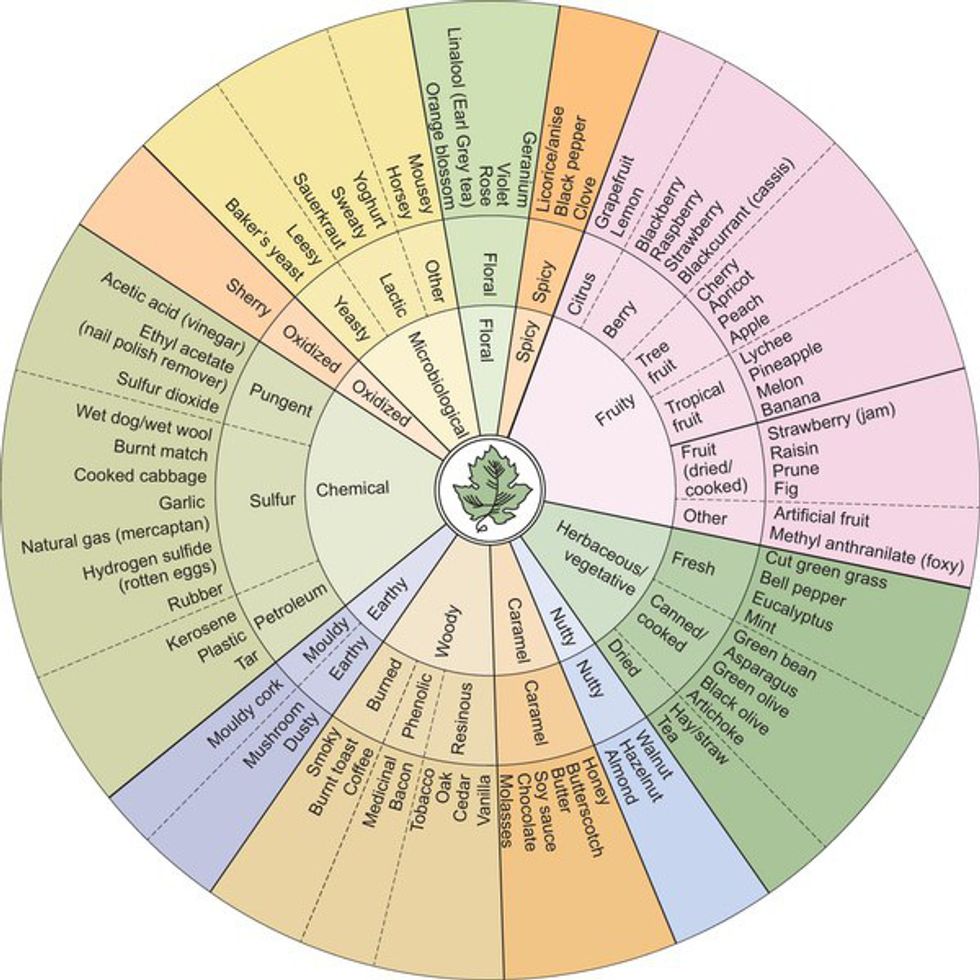Wine is huge. Especially for millennials. As a group, we drink 42% of all wine consumed in the U.S. That's more wine than both Generation X and the Baby Boomers.
Yeah.
So as one millennial to my fellow millennials, I'll share some wine tips with you all. This summer, I've been interning with a communication firm specializing in fine wine and food. I'm not an expert, but I have picked up a few things that will make you look less stupid...look more knowledgeable.
(From Plus.Google.com)
First thing's first...
1. Tasting wine is not the same as drinking wine
(from Wifflegif)
Any and all winos will jump on you for this. Tasting is all about evaluating the qualities of the wine. Anyone can drink it, but tasting requires knowledge. There are three main components in tasting: looking, smelling and sloshing. This is how you do it.
Looking: Hold it up to the light. Look at the rim of the glass against a clear background. If it's a red, is it a purple-blue? That means it's a young. Is it brick red? That means it's aged. If it looks brown, that means the wine is very mature but not necessarily spoiled. White wines are not typically for aging, so if your white wine looks brown on the rim, it might be spoiled. A golden yellow rim on a white is mature.
(From Tumblr)
Smelling: This is where it gets weird. You probably hear wine professionals, sommeliers, and wine enthusiasts mention an assortment of aromas which seem completely unrelated to wine. It also makes wine extremely intimidating for newbies. For example, if I were to say: "This wine is mature, and very complex. I'm picking up some woody aromas. Some oak, some vanilla... a bit of burnt toast" you may be slightly irritated with the wine snobbery and frustrated that you didn't pick up the smells as well. But, these aromas are simply the smells one picks up before drinking. The rationale is that our nose is part of our sense of taste, so smelling wine helps us find more wine characteristics.
(From Reddit)
Dr. Ann Noble, a past Viticulture Professor at UC Davis, developed a table of the different aromas that can appear within a wine. It's a lot and I haven't memorized all of them. I don't suggest learning all of them, but the takeaway here is that wine is weird and that there are a few main categories: fruity, spicy, floral, vegetable, caramel, woody and so on. It gets complicated.
(from Bois de Jasmin)
Sloshing: Ew. Gross... but all of the wine pros do it, and there is a reason why. Sloshing allows for wine to hit all parts of the taster's mouth so that the taster can receive the ultimate tastebud experience. Sucking in air with wine in your mouth also adds to the complexity of taste and creates a more pronounced flavor. Look for the taste when you slosh. People sometimes spit after sloshing.
(From WUPE.com)
If your mouth feels dry after tasting a red, it's the tannins (these are the skins of grapes and gives the dry aftertaste.) Tannins are usually overwhelming in young reds like Cabernet Sauvignon, Barolo or a young Bordeaux. They soften as they age, as they're meant to. If a wine is sweet, then it means the grapes were harvested later when they are overly ripe and sugary. Also look for an aftertaste. Is it pleasant and long (cough, cough...that's what she said!)..? Good. That's the goal. Overall, the wine shouldn't be too sweet, too acidic, too alcoholic or have overly strong tannins. If each of these elements are in harmony, the wine is called "balanced."
(from Simpsonsworld.com
So now you know about the process. Below are the most common wines that every "wine expert" must know.
2. Most Common Wines
1. Cabernet Sauvignon. Pronounce it like: "Cab-er-nay Saw-vin-yawn." Some tastes to look for include black cherry, black currant, baking spices and cedar (which comes from oak barrel fermentation). Cab Sauv is a full-bodied (a rich, complex and well rounded flavor that lingers in the mouth) red wine. It used to be planted in the Bordeaux region of France (tremendously important wine region) and is the most popular wine variety in the world. It is characterized by bold tannins and strong alcohol. Pair it with smoked meats and French aged cheeses.
(From Reddit)
2. Syrah. Pronounce it like: "Sear-ah." Some tastes to look for include blueberry, plum, tobacco, meat, black pepper and violet. Syrah is a full-bodied red wine. It is heavily planted in the Rhône Valley of France and Australia. Sometimes Syrah is blended with Grenache (pronounced "Gre-nache") and Mourvèdre (pronounced "More-veh-drha") to make a Rhône (pronounced rohn) blend. Pair it with smoked meats, Mediterranean, French and American firm cheeses.
3. Zinfandel. Pronounce it like: "Zin-fan-dell." Some tastes to look for include overripe nectarine, raspberry, sour cherry, plum, blackberry and sweet tobacco. Zinfandel is a medium-bodied to full-bodied red wine. It originated in Croatia. They are typically fruity and spicy with a medium finish (medium aftertaste length.) Sometimes it's pink colored (pink wines are typically called rosé.) Pair it with meat, barbecue, Thai, Chinese, Italian, Indian and full flavored cheeses.
3. Chardonnay. Pronounce it like: "Shar-dun-nay." Some tastes to look for include yellow citrus, tropical fruits, cinnamon, butterscotch and toasted caramel notes. Chardonnay is a medium-bodied to full-bodied white wine. It's the white grape of Burgundy (another large wine growing region in France.) When oak-aged, they tend to have spicy and even bourbon notes. When unoaked, they are usually lighter and zestier. Pair it with seafood, mushroom, French, cream sauces and soft cheeses.
Remember this information and you'll impress your friends. Hopefully you'll look a little less like this...
and a little more like this...
Cheers!
































